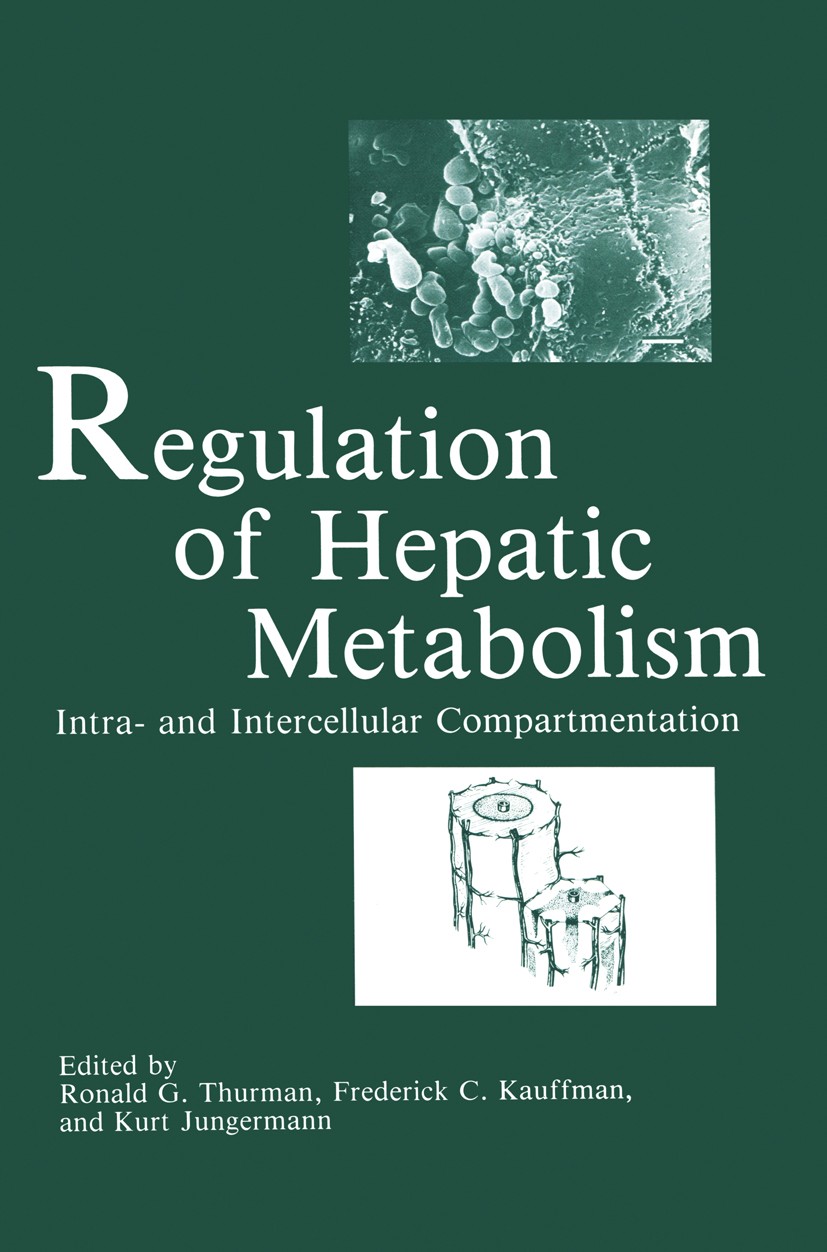| 书目名称 | Regulation of Hepatic Metabolism | | 副标题 | Intra- and Intercell | | 编辑 | Ronald G. Thurman,Frederick C. Kauffman,Kurt Junge | | 视频video | http://file.papertrans.cn/826/825682/825682.mp4 | | 图书封面 |  | | 描述 | The liver is an exceptionally complex and diverse organ that functions both as an exocrine and an endocrine gland. It secretes bile, which contains many con stituents in addition to bile salts, and it synthesizes and releases many substances in response to the body‘s demands, including prohormones, albumin, clotting factors, glucose, fatty acids, and various lipoproteins. It has a dual blood supply providing a rich mixture of nutrients and other absorbed substances via the portal vein and oxygen-rich blood via the hepatic artery. This functional heterogeneity is accompanied by cellular heterogeneity. The liver contains many cell types including hepatic parachymal cells, Kiipffer cells, Ito cells, and endothelial cells. The most abundant cell type, the parenchymal cells, are biochemically and structurally heterogeneous. The cells in the oxygen-rich areas of the portal triad appear more dependent on oxidative metabolism, whereas those around the central vein (pericentral, perivenous, or centrolobular areas) are more dependent upon an anaerobic mechanism. Throughout this volume the latter three terms are used synonymously by various authors to indicate the five to eight layers of cel | | 出版日期 | Book 1986 | | 关键词 | Drogen; Hormone; Lipoprotein; antibody; bile; bile acid; cholestasis; enterohepatic circulation; glucagon; gl | | 版次 | 1 | | doi | https://doi.org/10.1007/978-1-4684-5041-5 | | isbn_softcover | 978-1-4684-5043-9 | | isbn_ebook | 978-1-4684-5041-5 | | copyright | Plenum Press, New York 1986 |
The information of publication is updating

|
|
 |Archiver|手机版|小黑屋|
派博传思国际
( 京公网安备110108008328)
GMT+8, 2025-12-27 03:28
|Archiver|手机版|小黑屋|
派博传思国际
( 京公网安备110108008328)
GMT+8, 2025-12-27 03:28


